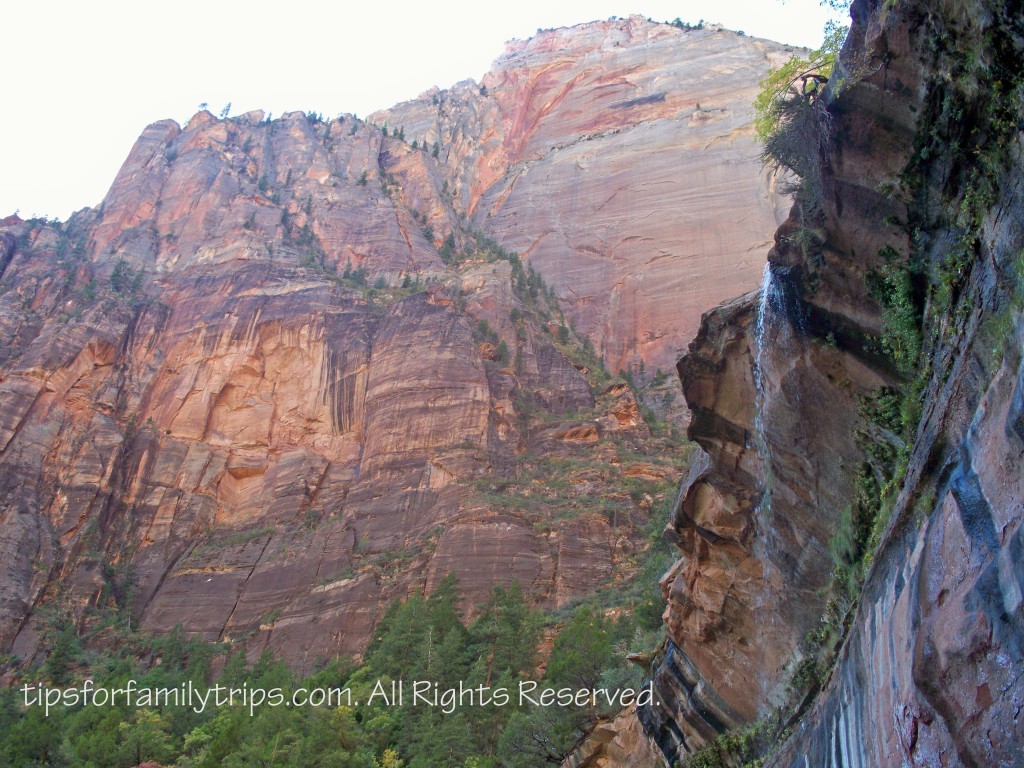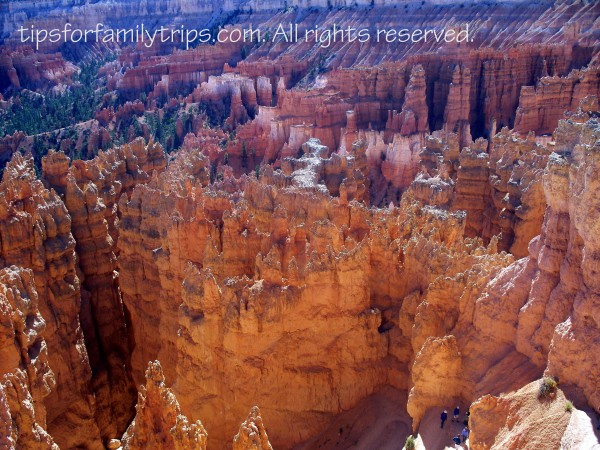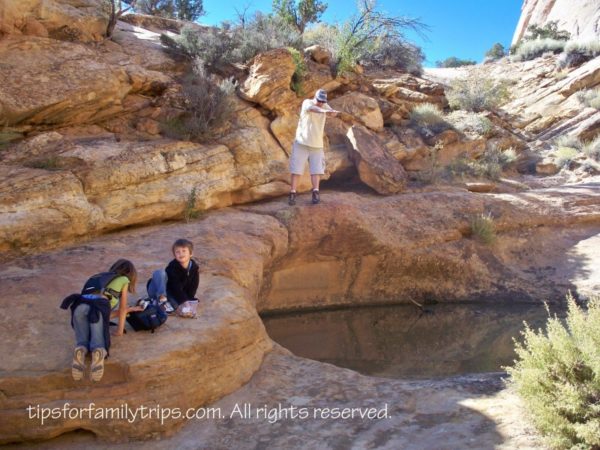It’s difficult to select only ten great family hiking trails in Utah, but the trails in Utah’s national parks are especially good places for families to explore the natural wonders of the world together. These are my family’s favorite trails from each of Utah’s national parks.
I use two criteria for determining whether a hike is family-friendly. First, the hike must be easy enough for a preschooler to walk on his own. My five-year-old has walked nearly all of these trails in the past two years. Second, the hike must be worthwhile for everyone in the family. If I’m going to spend the time and money to travel to a national park, I want to see what makes it special.
Zion National Park
1. Weeping Rock
I have visited Zion National Park dozens of times and there were few visits when I didn’t hike to Weeping Rock. This short, paved trail leads visitors to an alcove in the canyon wall where water drips continuously through the sandstone in front, creating a hanging garden in the desert. The alcove also provides a spectacular view of Zion Canyon.
2. Emerald Pools
This is my eight-year-old daughter’s favorite hike. Families will discover three waterfall-fed pools along this trail. The one-mile stroller-friendly walk to the Lower Pool is worthwhile on its own. The last third-mile between the Middle Pool and the Upper Pool is rugged and strenuous, but the Upper Pool is the best of the three.
Bryce Canyon National Park
3. Rim Trail from Sunrise to Sunset Point
The entire Rim Trail is about 5.5 miles one way, but it has several entry and exit points, so it’s easy for families to customize their experience. The half-mile between Sunrise and Sunset Points is flat and paved and gives everyone a chance to stretch their legs while appreciating some of the best scenery in Bryce Canyon.
4. Navajo Loop
This 1.3-mile loop starts and ends at Sunset Point. The trail descends dramatically through the hoodoos to the floor of Bryce Canyon. The walk back uphill is strenuous, but there is no reason to rush through scenery this beautiful. Even an amateur photographer like me can’t take a bad picture here
Capitol Reef National Park
5. Capitol Gorge
This two-mile flat, unpaved trail was the main highway through Capitol Reef until 1964. Petroglyphs and the signatures of Mormon pioneers in the rock walls indicate that it had been used this way for a long time. At the end of the trail, take the short, steep trail to see natural water tanks in the rocks where rainwater collects in the desert.
6. Hickman Bridge
Two natural bridges, an ancient Fremont dwelling, and magnificent scenery are a pretty good return on your investment in this 2.5-mile hike. Pick up a printed trail guide before you start to fully appreciate all this hike has to offer.
Canyonlands National Park
7. Mesa Arch
The payoff for this hilly half-mile hike is an arch that frames endless canyons behind it. There are unfenced cliffs at the end, but there is plenty of room to enjoy the view without going near the drop-off.
8. White Rim Overlook
We often have this trail’s spectacular panoramas to ourselves because it isn’t well-marked from the road. Look for a marked picnic area just down the road from the Island in the Sky visitor center. Signs for the trailhead are inside the picnic area. There are unfenced cliffs at the end of this trail, but there is a shady place to sit and plenty of space to enjoy the view without getting too close to the edge.
Arches National Park
9. Sand Dune Arch
The first time my husband and I hiked this short, flat and sandy trail, we found a family relaxing in the shade near the trailhead with their camp chairs, picnic, and sand toys. We haven’t hiked this trail with our kids yet, but we’re coming prepared with the same equipment when we do.
10. Delicate Arch
None of the many photos of this iconic arch compare with the experience of seeing it in person. The three-mile hike across exposed sandstone can be challenging, but the perfect photo ops and the opportunity to walk right up to Delicate Arch is worth it. Plan to hang on to young children at the end because there are some scary drop-offs once you get to the arch, but not before.
Spring and fall are the most comfortable times to hike in all of these parks, though Bryce Canyon and Canyonlands are a little cooler and Zion has a river in which to cool off. Winter is a great time to hike to Delicate Arch.
I grew up visiting Utah’s national parks and now I enjoy sharing them with my family. Make them a part of your family memories too.
Allison Laypath is a family travel writer at tipsforfamilytrips.com, based in Salt Lake City, Utah. She and her husband took their first child on a two-week road trip at four-weeks-old and they have been traveling as a family ever since. Allison loves all types of travel, but especially road trips, national parks and travel within her home state of Utah.








































